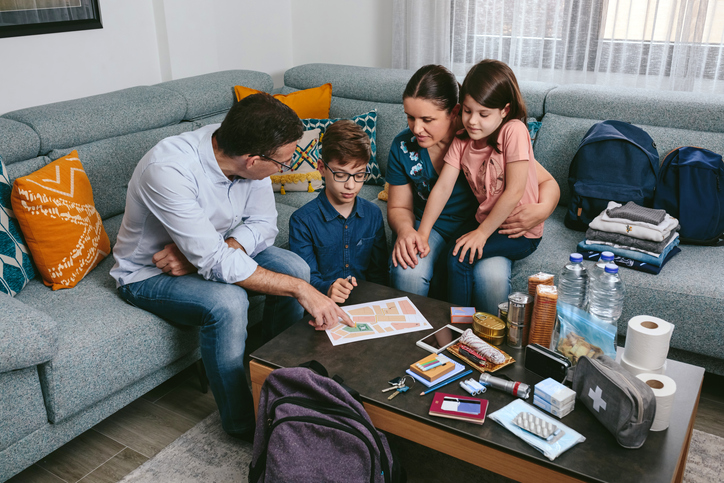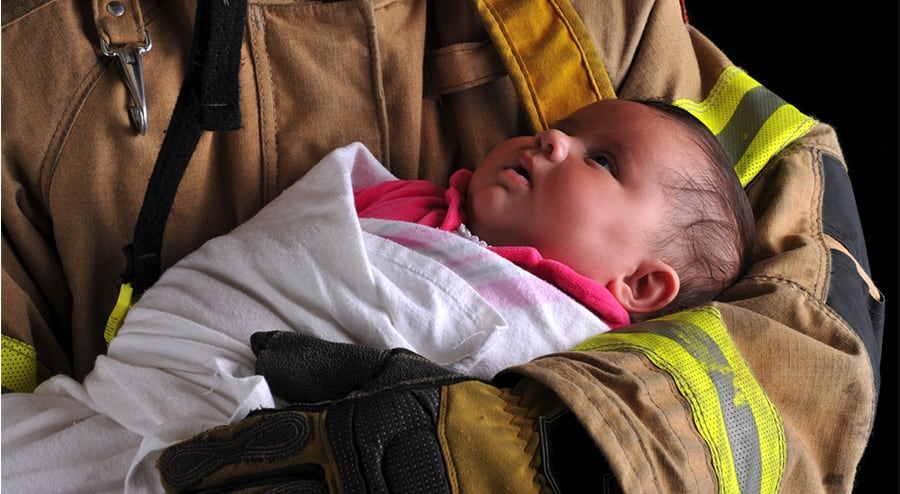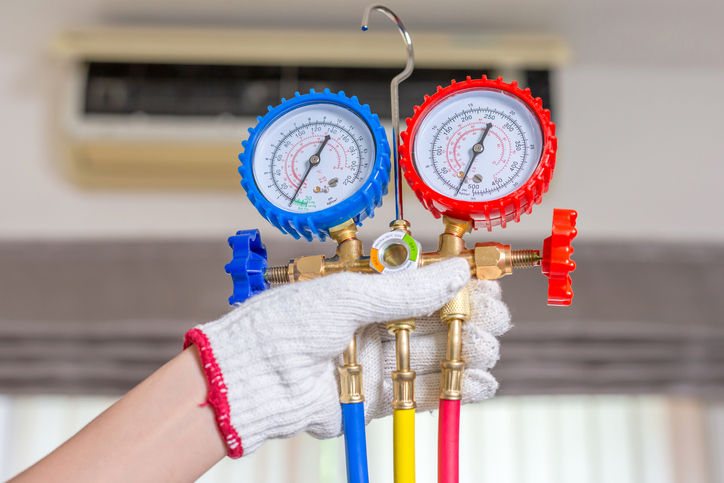Having a well-prepared Home Emergency Evacuation Plan is necessary in the face of unpredictable disasters and emergencies. Establishing effective evacuation routes and designated meeting points ensures the safety and well-being of your household during times of crisis.

It is important to understand the fundamentals of a Home Emergency Evacuation Plan and practice and implement it with precision in order to approach challenges with preparedness. Communication within the household is essential and coordinating with neighbors to create a robust community response can be very helpful. You should also account for specific hazards relevant to your area, whether they be earthquakes, floods, wildfires, or other potential threats.
Table of Contents
- Understanding the Basics of a Home Emergency Evacuation Plan
- Identifying Evacuation Routes and Meeting Points
- Practicing and Implementing the Plan
- Handling Challenges and Contingencies
- Communication and Community Coordination
- Building an Emergency Supply Kit
- Tailoring the Plan to Specific Hazards
- Take Away
Understanding the Basics of a Home Emergency Evacuation Plan
A Home Emergency Evacuation Plan is a comprehensive strategy designed to ensure the safe evacuation of individuals and families during unforeseen disasters and emergencies. It is a set of pre-established guidelines that outlines the actions to be taken, the routes to be followed, and the meeting points to gather at during evacuations. This plan is important for every household, as emergencies can strike without warning, leaving little time for decision-making and preparation.
The key elements of an effective Home Emergency Evacuation Plan include identifying primary and alternative evacuation routes within the home, mapping out accessible exit points, and conducting regular practice drills with all household members. Assigning specific roles and responsibilities to each family member is crucial for streamlining the evacuation process and avoiding confusion in high-stress situations. Furthermore, communication plays a pivotal role in the success of an evacuation. Establishing clear communication methods, such as using walkie-talkies or mobile phones, can ensure that all family members are aware of the situation and can gather at the designated meeting point outside the home promptly.
In creating a Home Emergency Evacuation Plan, consider investing in emergency supply kits containing essential items like first aid supplies, flashlights, battery-powered radios, non-perishable food, and water. Brands like Ready America and Emergency Essentials offer reliable and comprehensive emergency kits, with prices ranging from $50 to $200, depending on the size and contents. Additionally, consider installing smoke alarms and carbon monoxide detectors, like those from Kidde or First Alert, to provide early warning in case of fire or gas leaks. The cost of these detectors typically starts at $20.
A well-prepared and practiced Home Emergency Evacuation Plan ensures that your household can respond swiftly and efficiently during emergencies, maximizing the chances of everyone’s safety and well-being.
Identifying Evacuation Routes and Meeting Points
Map out evacuation routes that provide a swift exit from your home to ensure a safe and efficient Home Emergency Evacuation Plan. Identify the primary exit points, such as front and back doors, and determine the most direct paths to reach them from various areas within the house. Keep these routes clear of clutter or obstacles to facilitate a smooth evacuation process. Consider installing emergency escape ladders for upper floors, like the ones offered by brands such as Kidde or First Alert, which typically range from $30 to $100, depending on the model and height.
Ensure that these exit points are easily accessible, even in the dark or under stressful conditions. Adequate lighting, like motion-activated LED lights from brands like Mr. Beams or Eufy, priced between $20 and $50, can help illuminate escape routes during power outages or emergencies at night. Additionally, place glow-in-the-dark stickers on door handles and along corridors to aid visibility in low-light situations.
Identifying and addressing potential hazards and obstacles along evacuation routes should be done to ensure safety during an emergency. Secure heavy furniture, like bookshelves and cabinets, to the walls to prevent them from toppling over during earthquakes or other disasters. Keep hallways and stairways free from clutter and avoid placing heavy objects near exit points. Address any damaged or faulty doors, locks, or windows, and invest in sturdy door reinforcement kits, like those available from brands like Nightlock or Prime-Line, ranging from $20 to $50, to bolster security.
Lastly, designate a suitable meeting point outside your home where all family members can gather during an emergency evacuation. Choose a location that is easily recognizable, away from the house, and safe from potential hazards. Popular meeting points include a neighbor’s house, a community park, or a specific landmark. Ensure that all household members, including children, are familiar with the meeting point and understand the importance of gathering there to account for everyone’s safety.
By thoroughly identifying evacuation routes, addressing potential hazards, and designating a secure meeting point, your Home Emergency Evacuation Plan will be well-equipped to handle various emergency situations with precision and effectiveness.
Practicing and Implementing the Plan
Regular practice and conducting drills with all household members are important to familiarize everyone with their roles and responsibilities during an emergency. By practicing the evacuation routes and meeting points, family members can develop muscle memory and respond swiftly in high-stress situations. Aim to conduct drills at different times of the day to simulate various scenarios, including nighttime or when family members are at different locations within the home.
Assign roles and responsibilities to ensure a smooth and coordinated evacuation process. Designate specific tasks for each family member based on their age, ability, and location within the house. For instance, adults may be responsible for assisting elderly or disabled family members, while older children can help gather essential items like emergency supply kits and important documents. Consider using a color-coded system or laminated cards with instructions for each person to follow during an emergency. This can help reinforce the roles and make them easily accessible to everyone.
Accommodating pets during the evacuation process by preparing pet carriers or crates in advance and ensuring that they are easily accessible. Familiarize your pets with these carriers through positive reinforcement, creating a safe space for them during drills. Keep a pet emergency kit, containing food, water, medications, and comfort items, readily available to grab during evacuations. Brands like “TheBugOutBag” and “Ready America” offer pet emergency kits, ranging from $30 to $100, with essential supplies to cater to your pets’ needs during emergencies.
Implementing a Home Emergency Evacuation Plan
Consider the special needs of elderly or disabled family members when it comes time for an emergency. If someone in the household has mobility challenges, ensure that their exit routes are clear and accessible, and arrange for assistance if required. Keep necessary medical supplies, like medication or medical equipment, in an easily accessible location. Additionally, establish a communication plan with neighbors or nearby friends who can assist in providing support to vulnerable family members during evacuations.
Prioritizing regular practice drills, assigning clear roles and responsibilities, accommodating pets, and considering the needs of elderly or disabled family members allows for your Home Emergency Evacuation Plan to be better equipped to handle various challenges and ensure the safety of everyone in your household during times of crisis.
Handling Challenges and Contingencies
Anticipate and prepare for potential challenges and contingencies that may arise during an emergency when creating your plan. For instance, one challenge is the possibility of blocked primary evacuation routes. Identify alternative options, such as windows with emergency escape ladders, which can provide a safe way to exit upper floors. Brands like Kidde and First Alert offer reliable emergency escape ladders, with prices ranging from $30 to $100, depending on the model and height.
Be sure to establish communication protocols in the event of family members getting separated during an emergency. Equip each family member with a mobile phone or a two-way radio with a designated channel for emergency communications. Consider using walkie-talkies from brands like Motorola or Midland, priced between $30 and $100, to ensure seamless communication. Agree on a rallying point where family members can reunite if separated, and make sure everyone knows how to reach it from various locations in the neighborhood.
Addressing injuries and providing first aid during evacuations can be achieved by having a well-stocked first aid kit, like those available from brands such as Adventure Medical Kits or Johnson & Johnson readily accessible in your home. Familiarize all family members with the kit’s contents and basic first-aid procedures. Consider taking a first aid and CPR course to enhance your knowledge and ability to respond effectively during emergencies.
Ensuring the safety of children during the evacuation process requires special attention. Assign a responsible adult to each child, if possible, to ensure their well-being and guide them through the evacuation. Teach children how to dial emergency services and important phone numbers. If your child has specific health or behavioral needs, consider carrying a medical alert bracelet or emergency action plan to inform first responders about any required assistance.
Proactively preparing for blocked evacuation routes, establishing communication protocols, addressing injuries, and ensuring the safety of children creates a home Emergency Evacuation Plan that will be more robust and capable of handling unforeseen challenges during critical moments.
Communication and Community Coordination
Establishing clear and reliable communication methods within the household is essential for prompt emergency notifications. Consider using household intercom systems, like those offered by brands such as Ring or VTech, with prices ranging from $50 to $150, to relay important messages quickly and efficiently. Additionally, create a list of emergency contacts, including local authorities, neighbors, and family members, and keep it easily accessible for everyone in the household.
Coordination with neighbors can significantly enhance safety and support during evacuations. Introduce yourself to your neighbors and discuss the possibility of mutual assistance during emergencies. Create a community plan where neighbors can pool resources and help those who may need extra support, such as the elderly or individuals with disabilities. Platforms like Nextdoor or Facebook Groups can facilitate communication within the neighborhood and foster a sense of community preparedness.
Understanding neighborhood evacuation plans and community meeting points is central for a well-rounded Home Emergency Evacuation Plan. Local authorities often provide information on evacuation routes, assembly points, and emergency shelters in your area. Familiarize yourself with these plans and ensure that all family members are aware of the designated meeting points. In the case of widespread disasters like hurricanes or wildfires, community meeting points may be established at local schools or community centers to provide a safe gathering place for residents.
Establishing effective communication methods within the household, coordinating with neighbors for mutual assistance, and understanding neighborhood evacuation plans and meeting points, creates a comprehensive and encompassing Home Emergency Evacuation Plan.
Building an Emergency Supply Kit
A well-prepared Home Emergency Evacuation Plan should contain essential items to sustain your household during an evacuation or in the event of being temporarily cut off from outside assistance.
Food
Include a sufficient supply of non-perishable food, such as canned goods, granola bars, and freeze-dried meals from brands like Mountain House or Wise Company, with prices ranging from $20 to $100, depending on the size and duration. Remember to consider the dietary restrictions and preferences of all family members.
Water Considerations
Furthermore, store at least one gallon of water per person per day, and aim to have enough for at least three days. Brands like LifeStraw and Sawyer offer portable water filtration systems, with prices ranging from $20 to $50, which are valuable in case you need to find water from natural sources and filter it for safe consumption.
Medical Supplies
Your kit should also include essential medical supplies, such as a first aid kit, prescription medications, and personal hygiene items like hand sanitizers and wet wipes. Additionally, pack a flashlight with extra batteries, a battery-powered radio, and a multi-tool for utility purposes. Important documents and valuables should be safeguarded in waterproof containers or plastic bags, including identification cards, insurance policies, and family photos. Consider investing in a fireproof and waterproof safe, like those from brands like SentrySafe or Honeywell, with prices ranging from $50 to $200, to store these critical documents securely.
Meticulously assembling an emergency supply kit with essential items, including sufficient food, water, medical supplies, and safeguarding important documents and valuables, you will enhance your family’s preparedness and resilience during emergencies. Keep the kit in a readily accessible location, known to all family members, and ensure that it is regularly updated to account for changing needs and circumstances.
Tailoring the Plan to Specific Hazards
A well-tailored Home Emergency Evacuation Plan takes into account the hazards specific to your area as different regions are prone to various natural disasters, such as earthquakes, floods, wildfires, hurricanes, or tornadoes. It’s important to develop a plan that addresses the threats and challenges posed by each hazard in a certain region.
Earthquake Considerations
For earthquake-prone regions, securing heavy furniture to walls and installing earthquake straps for water heaters are important safety measures. Brands like QuakeHOLD and Safety 1st offer earthquake straps and furniture anchors, with prices ranging from $10 to $30, to prevent furniture and appliances from toppling during seismic activity.
Flooding
In flood-prone areas, elevate electrical appliances and install flood barriers, like sandbags or flood barriers from FloodSax or Quick Dam, with prices ranging from $20 to $100, to prevent water from entering your home. Familiarize yourself with local flood evacuation routes and designated shelters.
Wildfire Risks
For wildfire-prone regions, create a defensible space around your home by clearing flammable debris and vegetation. Keep your gutters clean and consider installing fire-resistant roofing materials, such as metal or asphalt shingles, to reduce the risk of fire spreading. Brands like GAF and Owens Corning offer fire-resistant roofing options, with prices starting at $100 per square (100 square feet).
Staying informed about emergency updates from local authorities is paramount during hazardous situations. Sign up for local emergency alerts via text messages or smartphone apps like FEMA’s Emergency Alert System or the Red Cross Emergency App. Additionally, have a battery-powered radio, like those from Sony or Eton, priced between $20 to $50, to receive critical information in case of power outages.
Supporting neighbors who may require assistance during evacuations fosters a strong and interconnected community response. Consider organizing a neighborhood watch or emergency preparedness group to discuss and implement safety strategies together. Reach out to neighbors with special needs or elderly residents, offering your assistance and ensuring they have a reliable support system during emergencies.
By customizing your Home Emergency Evacuation Plan to address hazards specific to your area, staying informed about emergency updates, and supporting your neighbors, you will be better prepared to face potential challenges and protect your family and community in times of crisis.
Take Away
A well-prepared Home Emergency Evacuation Plan is essential for safeguarding lives and property during disasters. By understanding evacuation routes, practicing the plan, and addressing specific hazards, households can enhance their readiness. Take action, prioritize safety, and foster community support to build a stronger and more resilient response for a safer future.




